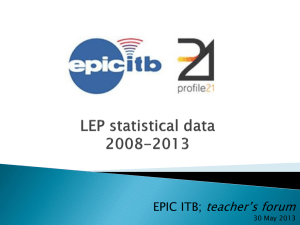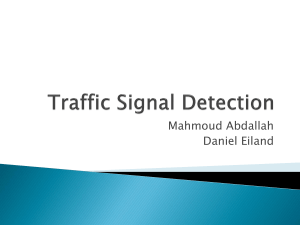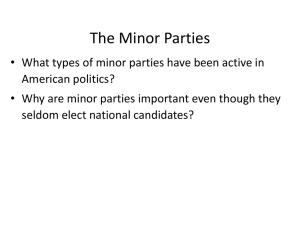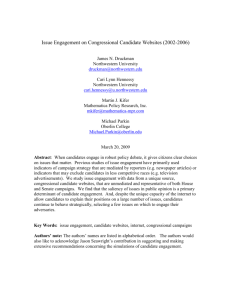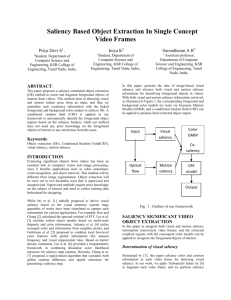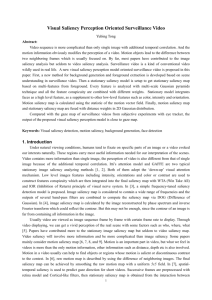Learning video saliency from human gaze using candidate selection
advertisement
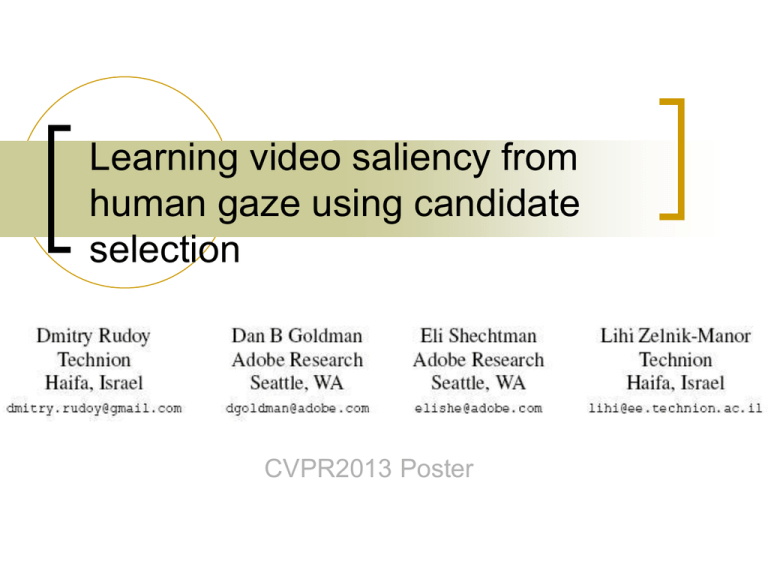
Learning video saliency from human gaze using candidate selection CVPR2013 Poster Outline Introduction Method Experiments Conclusions Introduction Predicting where people look in video is relevant in many applications. Image vs. video saliency Introduction Two observation: 1.image saliency studies concentrate on a single image stimulus, without any prior. 2. when watching dynamic scenes people usually follow the action and the characters by shifting their gaze to a new interesting location in the scene. Introduction We propose a novel method for video saliency estimation, which is inspired by the way people watch videos. Method Candidate extraction Modeling gaze dynamics Candidate extraction Three types of candidates: 1. Static candidates 2. Motion candidates 3. Semantic candidates Candidate extraction 1. Static candidates calculate the graph-based visual saliency (GBVS) Candidate extraction 2. Motion candidates calculate the optical flow between consecutive frames apply Difference-of-Gaussians (DoG) filtering to the optical flow magnitude Candidate extraction Static (a) and motion (b) candidates. Candidate extraction 3. Semantic candidates due to higher level visual processing three types: center, face, and body Candidate extraction 3. Semantic candidates small detections : create a single candidate at their center. large detections : create several candidates four for body detections (head, shoulders and torso) three for faces (eyes and nose with mouth). Candidate extraction Semantic candidates Modeling gaze dynamics Features Gaze transitions for training Learning transition probability Features the creation of a feature vector for every ordered pair of (source, destination) candidate locations The features can be categorized into two sets: destination frame features and inter-frame features. Features As a low level spatial cue we use the local contrast of the neighborhood around the candidate location. Gaze transitions for training Whether a gaze transition occurs from a given source candidate to a given target candidate. 1. choose relevant pairs of frames Scene cut 2. to label positive and negative gaze transitions between these frames Gaze transitions for training Learning transition probability whether a transition occurs or not train a standard random forest classifier using the normalized feature vectors and their labeling. trained model classifies every transition between source and destination candidates and provides a confidence value. Learning transition probability transition probability P(d|si) Experiments Dataset : DIEM (Dynamic Images and Eye Movements)dataset CRCNS dataset Experiments Experiments Experiments Experiments Conclusions The method is substantially different from existing methods and uses a sparse candidate set to model the saliency map. using candidates boosts the accuracy of the saliency prediction and speeds up the algorithm. the proposed method accounts for the temporal dimension of the video by learning the probability to shift between saliency locations.




